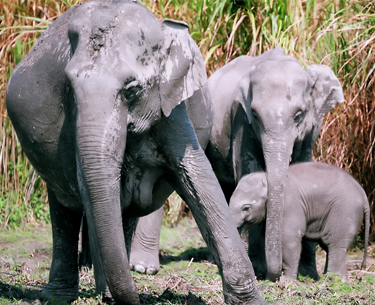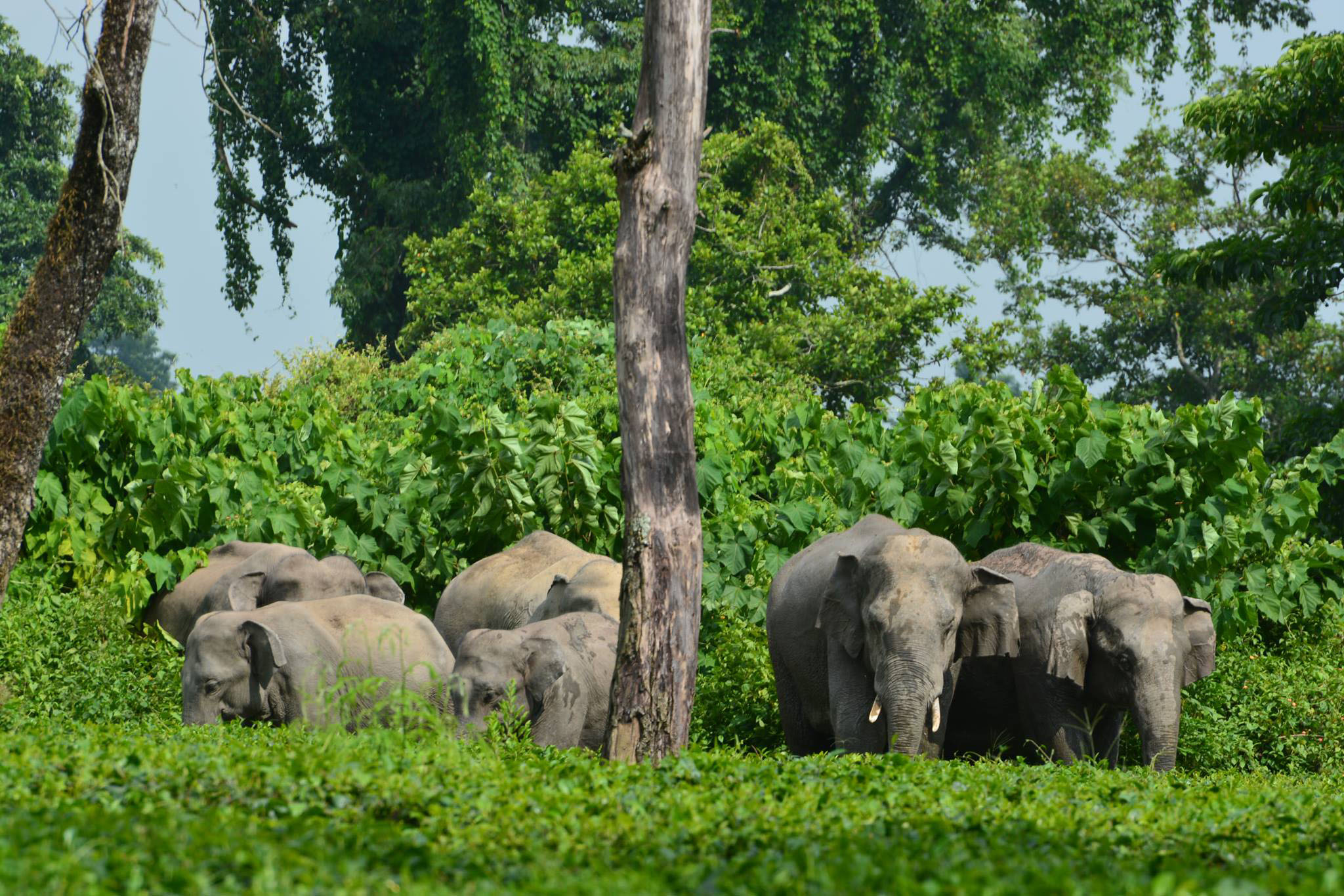Asian Elephant Conservation Fund 2015 |
|
| Total Number of Grants Awarded | 33 |
| Total Funds Distributed Through Grants | $1,759,070 |
| Total Partner Contributions Leveraged by Grants | $1,994,195 |
| Total Number of Countries that Received Program Support *Not including regional projects |
7* |
Large herds of elephants once roamed freely throughout Asia’s forests and grasslands. Today, the Asian elephant (Elephas maximus) is classified as endangered according to the IUCN Red List. Estimates range from 20,000 to 40,000 in the wild, with continued declines mainly caused by habitat loss, human-elephant conflict, and poaching.
Asian elephants face many threats in the wild, but habitat loss and fragmentation are the primary causes of their decline. All Asian elephant range countries are currently experiencing rapid human population growth. This growth in population accelerates the destruction of the forest, the principal habitat of Asian elephants, through intensive logging, clearing of forested land for agriculture, livestock grazing, and infrastructure development for human settlements. As the natural habitat of Asian elephants shrinks, hungry elephants are forced to search for food outside of the forest. Often, these food sources are local villagers’ subsistence crops, such as banana, rice, and cassava plantations, which are damaged by elephants and can result in retaliation by angry villagers. Furthermore, human fatalities regularly result from the clash of humans and elephants - each year in Sri Lanka, more than 100 elephants and 50 people are killed during conflict events. In addition to habitat loss and human-elephant conflict, Asian elephants are also poached regularly for their ivory tusks and other body parts

Credit: Udayan Borthakur
The U.S. Fish and Wildlife Service is working to mitigate human-elephant conflict and stop poaching by supporting conservation projects working to identify ways to alleviate human-elephant conflict, increase law enforcement capacity to monitor illegal logging and poaching, and conduct community outreach and awareness to inspire pride and optimism for Asian elephants in range countries. The United States Congress passed the Asian Elephant Conservation Act in 1997, which established a fund for the protection of the Asian elephant and the conservation of its habitat. In 2014, the program awarded more than $1.4 million for projects funded under the Asian Elephant Conservation Fund and leveraged more than $2.2 million in additional funds that supported 26 projects in nine countries. Project highlights include:

Credit: Jayanta Kumar Das
- Nepal: Minimizing human-elephant conflict through scientific management and community engagement with awareness programs and alternative livelihood options, operationalize rapid response team to deal with conflict incidents and conduct human elephant co-existence (HECx) related awareness activities in Nepals’s Bardia National Park.
- Thailand Empowering wildlife guardians in Thailand's forgotten parks by providing lasting protection for elephants and their habitat through forest ranger training and community support in the Dong Phayayen Khao Yai forest complex.
- Vietnam and Cambodia: Establishing trans-boundary co-operation on law enforcement and protected area management between Vietnam and Cambodia in the Eastern Plains Landscape for Asian elephant and tiger conservation.
- Indonesia: Training and regional workshops for veterinarians in Banda Aceh to improve the care of captive elephants, working to conserve wild elephants and learn about diseases affecting wild elephants.

